- Published 15 Nov 2022
- Last Modified 27 Nov 2023
- 9 min
A Complete Guide to Push Button Switches by Eaton
Use our helpful guide by Eaton to find out how push button switches work, their uses, and the different types, so you can find the best switch for your application.
Push Button Switches Explained
Push button switches are an important component in electrical circuits as they help to control the flow of current to devices. Simple yet effective, this type of switch ensures better safety and efficiency of electrical systems. So that you can choose the most suitable one, we’ve created this comprehensive guide with Eaton, a global industry leader in power management solutions.
What is a Push Button Switch?
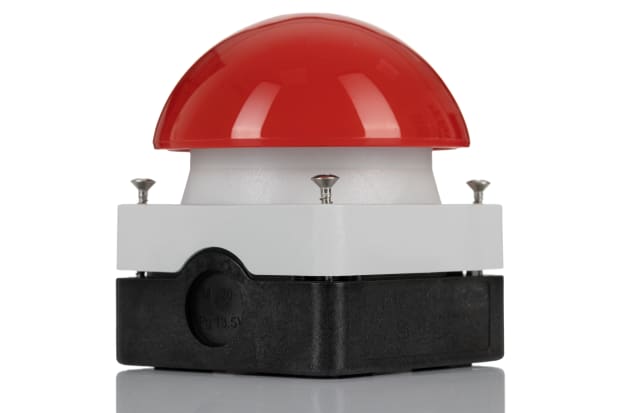
A push button switch controls an action in a machine or other type of process. Also referred to as pushbutton switches or push switches, you’ll find these small but fundamental components used commonly in the home and in workplaces.
They are designed to be easily identifiable, and the buttons will typically be made from durable materials like plastic or metal to withstand repeated pushing. The shape of the button may either be flat or customised to ergonomic specifications, making it easy for you to press when needed. There is a broad variety of models available, which are powered either by momentary or maintained action.
How Does a Push Button Switch Work?
Most push button switches function in the same way. Pressure is placed on the button or actuator, resulting in the depression of the internal spring and contacts and the touching of stable contacts at the bottom of the switch. This process will either close or open the electrical circuit. You can choose between push buttons featuring normally open or closed contacts, which change state upon actuation.
What’s the Difference Between N/O and N/C Contacts?
With N/O (Normally Open) contacts, the default state of the contacts is open, meaning that the circuit is not complete and current cannot flow through the switch. Engaging the button completes the path for current to flow. For N/C (Normally Closed) contacts, the default state of the contacts is closed, which means that the electrical circuit is complete. When the push button is activated the contacts are opened and the flow of current is interrupted.
What’s the Difference Between Momentary and Maintained Push Button Switches?
Continual pressure must be maintained on the button of a momentary switch to prompt the action. After the button is released the switch will return to its original state. This is useful for temporary activations, like doorbells or intercom systems.
This diagram highlights the operation of a momentary switch button. The triangles indicate the momentary action and the poles are specific to the number of circuits that the switch connects with during operation.
Maintained push buttons will stay in the set contact state until pressure is reapplied, which will then cause them to return to their original state. You’ll find these units used for applications like start/stop functions for machinery, lighting systems, and alarms.
This is also referred to as latching operation. This diagram shows the relevant electrical symbols.
Application Example Diagram: Quick Start Ignition Circuit
The diagram below demonstrates how a push button can be used alongside an ignition switch as part of a quick-start ignition circuit, showing the basic circuit design and wire layout required for this.
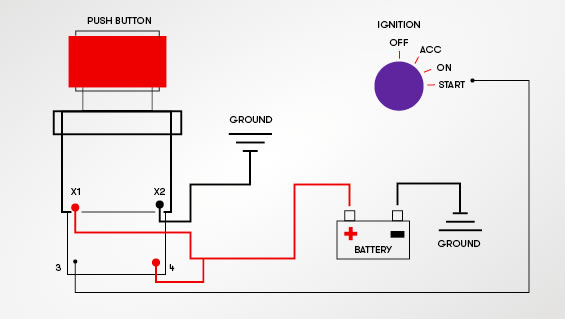
Where are Push Button Switches Used?
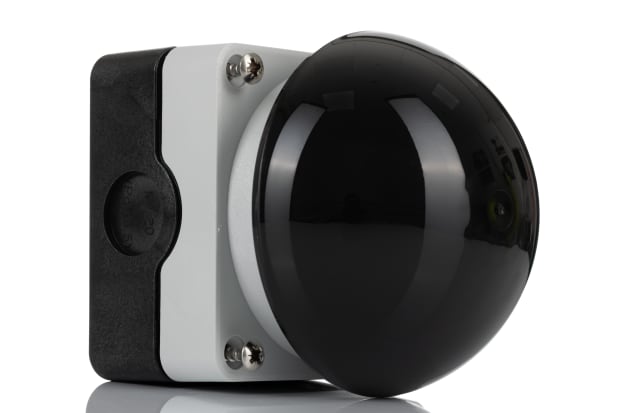
You can use push button switches in a huge variety of applications such as industrial machinery, home appliances, computers, control panels, automatic doors, security systems, audio equipment, lighting systems, access control, elevators, and public address systems. They can serve functions such as turning a device on or off, or causing a particular type of action.
In many cases, the buttons will be a specific colour to indicate their actions. For example, a red button is typically used to denote a ‘stop’ function, whereas green may demonstrate ‘go’ or ‘start’. This helps to reduce the risk that someone will press one by mistake. Emergency stop buttons are generally red with a yellow background to guarantee high visibility, and they typically have larger heads for easier use. You can read more about E-stops with our guide here.
Other uses include:
- Reset switches - they are often particularly small and may be switched on and off with a special tool
- Also calculators, toilet flushes, scientific instruments, medical equipment, shower systems, keyboards, and gaming consoles
What is the Purpose of an Illuminated Button Switch?
Illuminated push buttons provide a much higher level of visibility for the switch location or as an indication of its current status. They have built-in LED indicators or backlighting which can be easily seen in dim or busy environments, such as on industrial machinery.
What Button Shapes are Available?
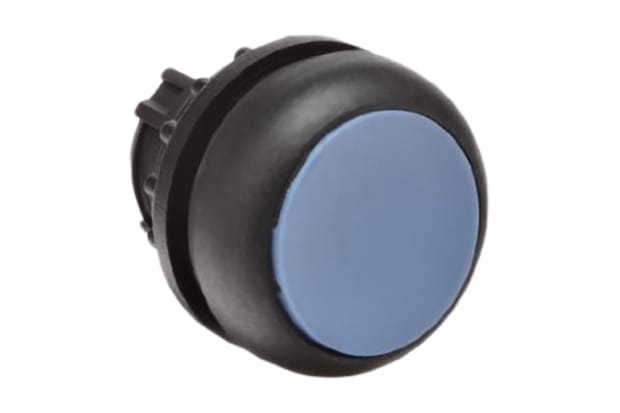
These devices come in various shapes, with round and square being among the most commonplace. You’ll also find shapes such as mushroom-headed, joystick, and flat buttons used.
Are They Water Resistant?
For models with high ingress protection, you will need to look for units with high IP ratings, such as IP65, IP66, IP67, IP68, and IP69K. This shows the level of protection a device has against moisture and particles. A button with an IP65 rating will be protected against low-pressure water jets, while an IP69K-rated one will be protected against high-pressure, high-temperature jet sprays, wash-downs and steam-cleaning procedures.
Push Button Switch Types
There are many different types, each with unique advantages. Which version you need will depend on factors such as the intended task, actuator style, and IP rating. As we mentioned earlier, the momentary and maintained push button switches are the two of the most common versions used.
Other types include:
2-Position Push Button Switches
These have two set positions for turning the connected device off-on. Usually encased in protective plastic, with a key being required for operation.
Dual Push Button Switches
Similar to the two-position variety, they feature one button for electrical connection and one for disconnection. The on button is typically green; the off button red. They will sometimes include LEDs, with the backlighting indicating the status of the device.
Push to Break Switches
Also referred to as normally closed (NC), they are a frequently used variety, operating oppositely to maintained and momentary types. Electricity can flow to the circuit when no pressure is applied to the button. However, the flow will immediately be broken on pressing. The switch can remain on in either position, with the connection made and broken from separate devices.
Push to Make Switches
They enable electricity to flow through the circuit whenever the two contacts are held in. The connection will be broken as the button is released. You’ll find them used on devices like doorbells, calculator buttons, and keyboard keys. Some feature both the push to make and push to break variety, depending on the wiring of the switch.
Panel Mounted Push Button Switches
Specifically designed for attachment to sturdy mountings. You should refer to the button’s technical datasheet to identify the panel cut-out size. Often used to power electronic devices within domestic and workplace settings.
Miniature Push Button Switches
Also called micro push button switches, these are generally used for resetting small electronic devices.
Circuit Board Push Button Switches
They restrict the circulation of electricity until the button is pressed. They operate through the process of user interaction and are usually integrated on top of a printed circuit board. Typically used for powering keyboards, keypads, and interface control panels.
Tactile Push Button Switches
Also known as tact switches, these compact switches are commonly designed for mounting on PCB boards. They require a relatively small amount of force for adjustment of the switch and typically make a clicking noise to indicate whether or not the power is circulating. Some tactile switches also feature LED illumination. This illuminated functionality signals that the device is in the on or off state, or experiencing a fault.
Square Push Button Switches
Feature square buttons and come in a variety of colours. You’ll see these on items of machinery and automated equipment.
Push Button PCB Switches
Surface-mounted, designed to fit directly over the top of the PCB. Through-hole or thru-hole varieties are connected via a drilled hole on the printed circuit boards, with soldering applied to pads on the reverse side. Conversely, surface-mounted types are designed to attach directly to the surface of the board.
Locking Push Button Switches
They feature a mechanical locking function which prevents the button from jumping completely and immediately after release. It will need to be pressed one more time to be unlocked.
Industrial Push Buttons
Typically take the form of complete built-in units, including the actuator, fixing collar, and contact block. Designed for easy installation in areas requiring manual intervention and ideally suited to industrial applications. May be installed to control the circulation of power to heavy machinery, for instant shut-off in an emergency.
Push to Make Door Switches
Surface-mounted, ideally suited to the electrical operation of sliding and standard opening doors, typically made from white plastic and are suitable for the full range of door types.
Push Button Switch Voltage Ratings
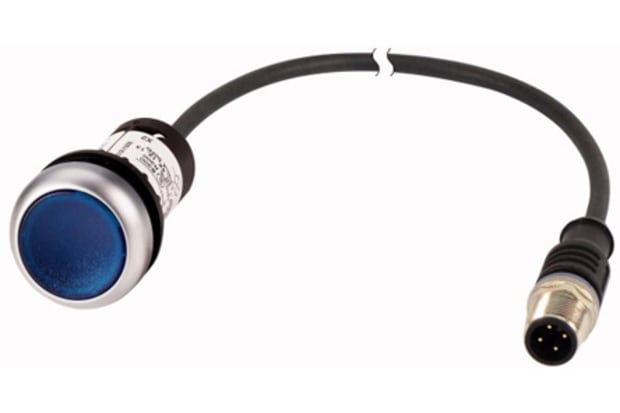
Don't assume that any old push button switch will work as long as it can handle the maximum current in your circuit. Look for clear markings on the switch to know if it's designed for AC or DC circuits. The speed at which the switch can break the circuit depends on whether you're dealing with AC or DC connections. Also, think about the kind of load you're dealing with – whether it's something like a motor (inductive load) or a simple resistor. That'll affect whether the switch is suitable or not.
Eaton M22 Series Push Button Switches
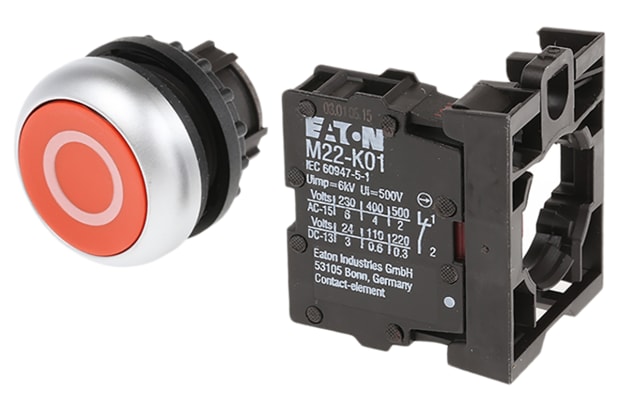
For enhanced ease of use and flawless functionality, the M22 series push button switches by Eaton are the perfect choice for your machine control applications, such as control panels, operating panels, and pendant stations. Increase the safety and efficiency of your machines and devices via full control and signalling with the M22 series buttons.
Features of the M22 Push Button Switches:
- Modular and flexible
- High-quality construction combined with elegant and ergonomic design
- Secure connections enable use in standard or high-vibration environments
- Can be used in high-pressure, high-temperature washdown applications due to excellent environmental ratings up to IP69K
- Silver, black, or chrome metal bezels available to suit your installation
- Easy to install with anti-rotation tab and central nut mount
- Wide variety of colours to choose from such as red, yellow, black, blue, and green
